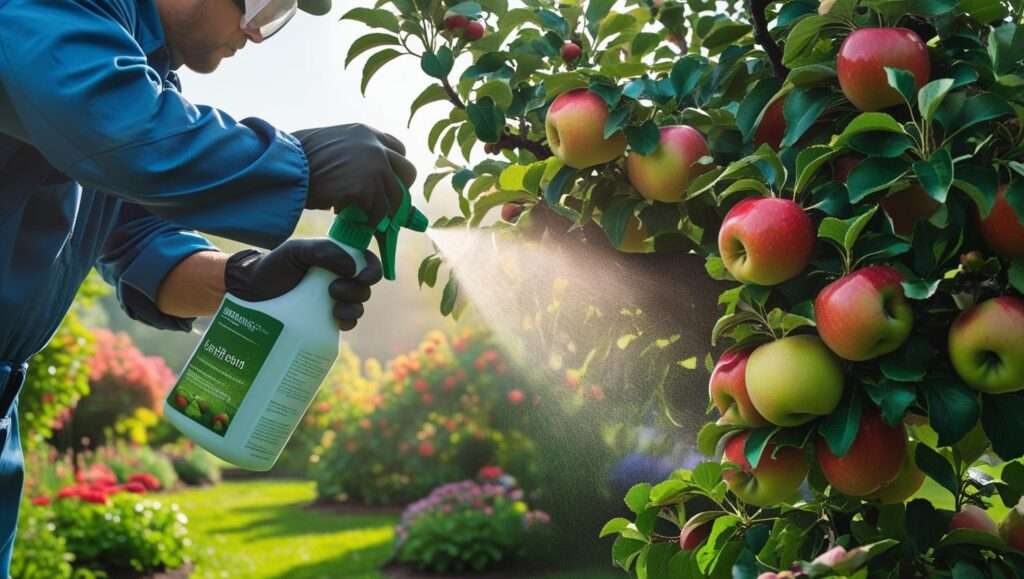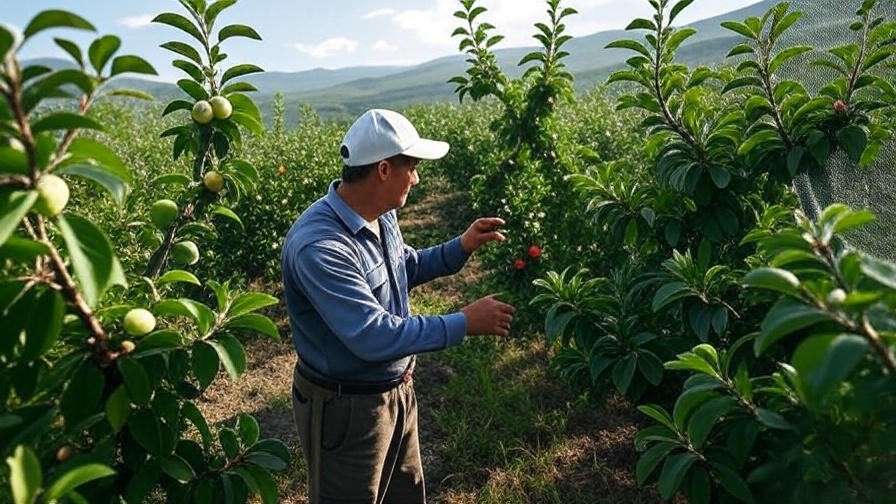Imagine losing half your farm’s fertile soil in a single decade, watching yields plummet while costs soar. This isn’t a distant nightmare—it’s a reality for farmers worldwide, with 24 billion tons of topsoil eroded annually due to unsustainable practices. An environmental protection plan is no longer optional; it’s a lifeline for farmers aiming to preserve their land and thrive in a changing world. This comprehensive guide will walk you through creating an effective environmental protection plan tailored for sustainable agriculture. By adopting proven practices, you can safeguard your farm’s ecosystem, boost productivity, and secure long-term profitability.
The Importance of an Environmental Protection Plan for Farmers

Environmental Challenges Facing Agriculture
Modern farming faces unprecedented environmental threats. Soil degradation affects 33% of global farmland, reducing crop yields by up to 50% in severe cases, according to the Food and Agriculture Organization (FAO). Water scarcity, driven by over-extraction and climate change, threatens irrigation-dependent farms. Extreme weather events—droughts, floods, and heatwaves—are becoming more frequent, disrupting planting schedules and harvests. These challenges don’t just harm the environment; they jeopardize food security and farmers’ livelihoods. An environmental protection plan addresses these issues head-on, ensuring your farm remains viable for generations.
Why Farmers Need a Proactive Plan
A well-crafted environmental protection plan delivers multiple benefits. Environmentally, it preserves soil health, reduces water pollution, and mitigates climate change by sequestering carbon. Economically, sustainable practices like cover cropping can increase yields by 10–20% while cutting fertilizer costs, as reported by the USDA. Farmers adopting these plans often qualify for government grants or sustainability certifications, opening new revenue streams. Socially, eco-conscious farming builds trust with consumers who prioritize sustainably grown products. As Dr. Jane Carter, an agronomist with 20 years of experience, notes, “Proactive environmental stewardship is the cornerstone of resilient, profitable farming in the 21st century.”
Key Components of an Effective Environmental Protection Plan
Defining an Environmental Protection Plan
An environmental protection plan is a strategic framework designed to manage a farm’s natural resources sustainably. It integrates practices that protect soil, water, and biodiversity while maintaining or enhancing productivity. Unlike generic sustainability guidelines, a good plan is tailored to your farm’s unique conditions—soil type, climate, and crop choices. Whether you manage a small organic farm or a large commercial operation, an environmental protection plan ensures your practices align with long-term ecological and economic goals.
Essential Elements to Include
A robust plan focuses on four core areas:
- Soil Health: Preventing erosion and improving fertility through practices like crop rotation and organic amendments.
- Water Conservation: Optimizing irrigation and reducing runoff to protect local water bodies.
- Biodiversity Preservation: Supporting pollinators, beneficial insects, and native plants to enhance ecosystem resilience.
- Carbon Reduction: Minimizing greenhouse gas emissions through renewable energy and reduced chemical inputs.
Tip: Download our free Environmental Protection Plan Checklist to assess how your current practices align with these components.
How to Build Your Environmental Protection Plan: A Step-by-Step Guide
Step 1: Conduct a Farm Environmental Audit
Start by evaluating your farm’s environmental footprint. Conduct soil tests to measure organic matter, nutrient levels, and erosion risks. Assess water usage with tools like flow meters to identify inefficiencies. Review chemical inputs, such as fertilizers and pesticides, to pinpoint areas for reduction. Resources like the USDA’s COMET-Farm tool or local extension services can provide data-driven insights. This baseline audit reveals your farm’s strengths and weaknesses, forming the foundation of your environmental protection plan.
Step 2: Establish Specific, Measurable Goals
Set clear, achievable goals to guide your plan. For example, aim to reduce water usage by 20% within two years or increase soil organic matter by 1% annually. Align these goals with local regulations, such as the EPA’s Clean Water Act, and sustainability certifications like USDA Organic. Specific targets keep your plan focused and measurable, ensuring progress over time. Involve your team or local experts to refine these goals based on your farm’s unique needs.
Step 3: Adopt Sustainable Farming Practices
Implement practices that support your goals:
- Cover Cropping and Crop Rotation: These techniques improve soil structure and reduce erosion. Studies show cover crops can boost yields by up to 15%.
- Precision Agriculture: Use GPS-guided equipment and soil sensors to optimize fertilizer and water use, cutting costs and environmental impact.
- Integrated Pest Management (IPM): Combine biological controls, like beneficial insects, with minimal chemical use to manage pests sustainably.
Step 4: Monitor Progress and Refine the Plan
Regular monitoring ensures your plan stays effective. Use soil sensors, drones, or manual checks to track soil health, water efficiency, and crop performance. Analyze data quarterly to identify trends and adjust practices as needed. For example, if soil tests show declining nutrient levels, you might increase organic compost applications. A mid-sized farm in Iowa, for instance, used drone monitoring to refine its environmental protection plan, achieving a 15% yield increase and 20% reduction in water use within two years.
Sustainable Practices to Strengthen Your Environmental Protection Plan
Soil Health and Conservation
Healthy soil is the backbone of sustainable farming. Practices like no-till farming reduce erosion by 90%, according to the USDA, while improving water retention. Contour plowing and windbreaks further protect soil on sloped or windy fields. Adding organic matter through compost or manure boosts fertility and sequesters carbon, helping mitigate climate change. These techniques not only preserve your land but also enhance its productivity over time.
Efficient Water Management

Water scarcity demands smarter irrigation. Drip irrigation systems deliver water directly to plant roots, reducing waste by up to 30% compared to traditional methods. Rainwater harvesting captures runoff for reuse, while buffer strips—strips of vegetation along waterways—prevent nutrient pollution in local streams. These practices save money and protect water quality, a key component of any environmental protection plan.
Enhancing Farm Biodiversity
Biodiversity strengthens farm resilience. Planting hedgerows or wildflower strips attracts pollinators like bees, which can increase crop yields by 20–30%. Preserving wetlands or wooded areas supports wildlife and natural pest predators, reducing reliance on pesticides. Dr. Maria Gonzalez, a soil ecologist, emphasizes, “Biodiversity isn’t just about ecology—it’s a practical tool for boosting farm productivity and resilience.”
Minimizing Your Farm’s Carbon Footprint
Reducing emissions is critical for sustainable farming. Solar-powered irrigation pumps cut energy costs and emissions. Switching to organic fertilizers, like composted manure, reduces reliance on synthetic inputs, which contribute to greenhouse gases. Low-emission machinery, such as electric tractors, further lowers your carbon footprint. These steps align your farm with global climate goals while appealing to eco-conscious consumers.
Addressing Common Barriers to Implementing an Environmental Protection Plan
Financial Limitations
Implementing an environmental protection plan can seem costly, especially for small or mid-sized farms. However, numerous funding options can ease the burden. The USDA’s Environmental Quality Incentives Program (EQIP) offers cost-sharing for practices like cover cropping or irrigation upgrades. State-level grants and nonprofit programs, such as those from the National Sustainable Agriculture Coalition, provide additional support. Long-term, sustainable practices reduce input costs—studies show no-till farming can save farmers $50–100 per acre annually. By leveraging these resources, you can make your environmental protection plan financially viable while reaping economic rewards.
Knowledge and Resource Gaps
Many farmers lack the expertise or tools to start an environmental protection plan. Fortunately, accessible resources abound. University extension services, such as those from Purdue or Texas A&M, offer free workshops and online courses on sustainable agriculture. Platforms like FutureLearn provide affordable certifications in soil health and water management. Partnering with local agricultural cooperatives or NGOs, like the Nature Conservancy, can also provide technical support. Tip: Download our free Sustainable Farming Resource Guide for a curated list of tools, courses, and organizations to support your plan.
Navigating Regulatory Requirements

Environmental regulations, such as the EPA’s Clean Water Act or state-specific runoff laws, can feel daunting. However, compliance is achievable with the right approach. Start by consulting your local USDA Natural Resources Conservation Service (NRCS) office for guidance on regulations affecting your farm. Use record-keeping software to document compliance with pesticide and water use standards. Many sustainable practices, like buffer strips, naturally align with regulatory requirements while enhancing your farm’s environmental protection plan. Staying compliant not only avoids penalties but also strengthens your reputation as a responsible farmer.
Evaluating the Success of Your Environmental Protection Plan
Tracking Key Metrics
Measuring progress is essential to ensure your environmental protection plan delivers results. Key performance indicators (KPIs) include:
- Soil Health: Monitor organic matter, nutrient levels, and erosion rates through annual soil tests. A 1% increase in organic matter can boost water retention by 20,000 gallons per acre.
- Water Efficiency: Track water usage in liters per hectare. Drip irrigation users often report 25–30% reductions in water consumption.
- Yield Improvements: Measure crop yields against your baseline to quantify gains. Sustainable practices can increase yields by 10–20% over time, per USDA studies.
Regular data collection helps you identify what’s working and where adjustments are needed.
Tools for Monitoring
Technology simplifies monitoring. Farm management software like FarmLogs or Climate FieldView provides real-time insights into soil health, water use, and crop performance. For smaller farms, free templates for manual record-keeping are available through extension services. Drones equipped with multispectral cameras can map soil moisture and crop health, offering precise data for decision-making. For example, a Kansas wheat farmer used FieldView to optimize their environmental protection plan, reducing fertilizer use by 15% while maintaining yields.
Example: A 50-acre vegetable farm in California implemented a plan focusing on cover cropping and drip irrigation. By tracking KPIs with soil sensors and FarmLogs, they achieved a 20% reduction in water use and a 12% yield increase within two years, demonstrating the power of data-driven environmental protection.
How an Environmental Protection Plan Builds Farm Resilience
Preparing for Climate Variability
Climate change poses significant risks to agriculture, with extreme weather events costing U.S. farmers $14.5 billion annually, according to NOAA. An environmental protection plan equips your farm to adapt. Drought-tolerant crops, like sorghum or millet, maintain yields in dry conditions. Flood-resistant infrastructure, such as raised beds or drainage systems, minimizes damage during heavy rains. Practices like crop diversification and soil conservation enhance resilience by stabilizing yields against unpredictable weather. These strategies ensure your farm thrives despite climate challenges.
Meeting Consumer Demand for Sustainability
Consumers increasingly demand sustainably produced food. A 2024 Nielsen study found that 73% of shoppers prefer brands with eco-friendly practices. An environmental protection plan positions your farm to meet this demand. Certifications like USDA Organic or Rainforest Alliance signal your commitment to sustainability, boosting marketability. For example, a coffee farm in Oregon gained a 25% price premium after achieving Certified Sustainable status, thanks to their robust environmental protection plan. As marketing expert Sarah Lin notes, “Sustainability isn’t just good for the planet—it’s a powerful tool for building brand loyalty.”
Frequently Asked Questions About Environmental Protection Plans
What’s the First Step in Developing an Environmental Protection Plan?
Start with a comprehensive environmental audit. Test your soil for nutrients and organic matter, measure water usage, and review chemical inputs. Tools like the USDA’s COMET-Farm or local extension services can guide you. This baseline helps you identify priorities and set realistic goals.
Are Environmental Protection Plans Expensive to Implement?
Costs vary depending on farm size and practices. Initial investments in drip irrigation or cover crop seeds can range from $500 to $5,000, but grants like USDA’s EQIP can cover up to 75% of expenses. Long-term savings from reduced inputs often offset costs within 2–3 years.
Can Small Farms Create Effective Environmental Protection Plans?
Absolutely. Scalable practices like cover cropping or rainwater harvesting benefit farms of all sizes. Small farms can start with low-cost changes, such as planting wildflower strips to attract pollinators, and gradually expand their plan.
How Soon Can Farmers Expect Results from Their Plan?
Some benefits, like water savings from drip irrigation, are immediate. Others, like soil health improvements from cover cropping, may take 1–5 years to fully materialize. Regular monitoring ensures you see incremental progress.
Conclusion
An environmental protection plan is more than a sustainability trend—it’s a strategic necessity for modern farmers. By addressing soil health, water conservation, biodiversity, and carbon reduction, you can safeguard your land, boost yields, and meet consumer demand for eco-friendly products. Start today by conducting an environmental audit, setting clear goals, and adopting sustainable practices. Monitor your progress and refine your plan to ensure long-term success. Download our free Environmental Protection Plan Template to kickstart your journey, and share your experiences in the comments to inspire others. An effective environmental protection plan is your key to sustainable farming and enduring profitability.a













